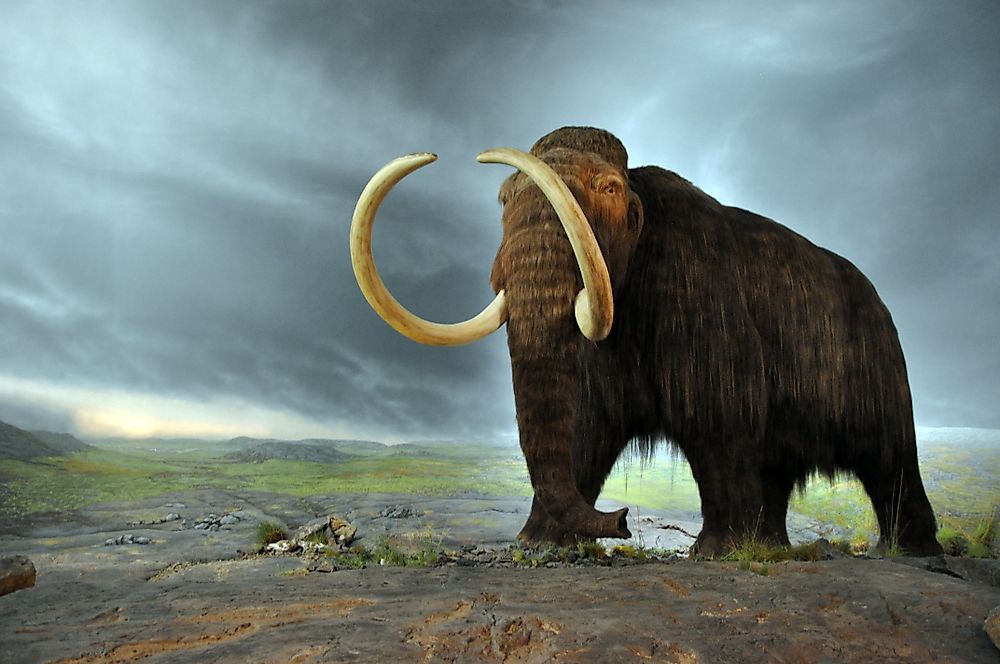Did Woolly Mammoths Still Roam Parts Of Earth When The Great Pyramids Were Built?

The giant creatures of the prehistoric world, such as the dinosaurs, saber-toothed tigers and woolly mammoths, continue to intrigue our imaginations to this very date, and make us wonder about the state of our world when these creatures roamed the Earth. However, contrary to most people’s conceptions, some of these creatures were not as ancient as we think them to be. Though no man ever saw a living dinosaur during his lifetime, the woolly mammoths, for instance, did in fact roam the face of the Earth even as the Egyptian pharaohs were busy building the pyramids of Giza, and for some time thereafter.
What Were Woolly Mammoths?
The woolly mammoths, the ancestors of the present-day Asian elephants, evolved in the Pleistocene epoch, and are one of the most extensively studied animals of prehistoric times. The discoveries of frozen carcasses and body parts of these elephant-like creatures in Siberia and Alaska, as well as the depiction of these animals in ancient cave paintings, have allowed scientists to extensively study the appearance and behavior of these giants. These mammoths were roughly the size of present day African elephants, and were well adapted to living in the Ice Age conditions of their time. They possessed two layers of fur cover and short ears and tails to remain protected against frostbite. They were also herbivores like the present day elephants, and lived on a diet of grasses and hedges.
When Did They Become Extinct?
For thousands of years, the woolly mammoth coexisted with the humans who exploited the creatures for their meat. These peoples also shaped their bones and tusks, which were in turn used to make human dwellings, tools, and artwork. The mammoths completely disappeared from mainland habitats by the end of the Pleistocene epoch, and the last remaining populations were lost 6,400 years ago from the St. Paul Island and, finally, 4,000 years ago from the Wrangel Island, several centuries after the constructions at Giza. The complete extinction of these massive creatures has continued to baffle scientists worldwide. A section of the scientific world believes that the woolly mammoths were killed due to the warming up of the environment and the inhabitation of the ice-free lands by the hunters of these mammoths, the Homo sapiens (a.k.a. modern humans). Another group of scientists, however, believe that the animals disappeared as a result of a comet or asteroid hitting the Earth which resulted in an Armageddon-like situation wiping out entire species from the face of the planet.
The Woolly Mammoths of Wrangel Island
Even after the woolly mammoths had vanished from most of the world, a cold and desolate island in the Arctic Ocean and now part of Russian territory, the Wrangel Island, still served as a home for these giant beasts until around 4,000 years ago. Scientists estimate that the island drifted off from the mainland about 12,000 years ago, carrying a small population of the mammoths with it. Hence, while the hunters of these mammoths, the humans, were populating the world, building sophisticated civilizations and using advanced technology to build impressive structures like the Pyramids of Giza in Egypt, the last of the woolly mammoths was fighting the lonely battle for survival on the far away island of Wrangel. Today, even though mankind is unable to sustain the current diversity of species on the planet, man ironically continues to hope to genetically revive the extinct woolly mammoth by way of genetic cloning, in a controversial field known as "de-extinction".







